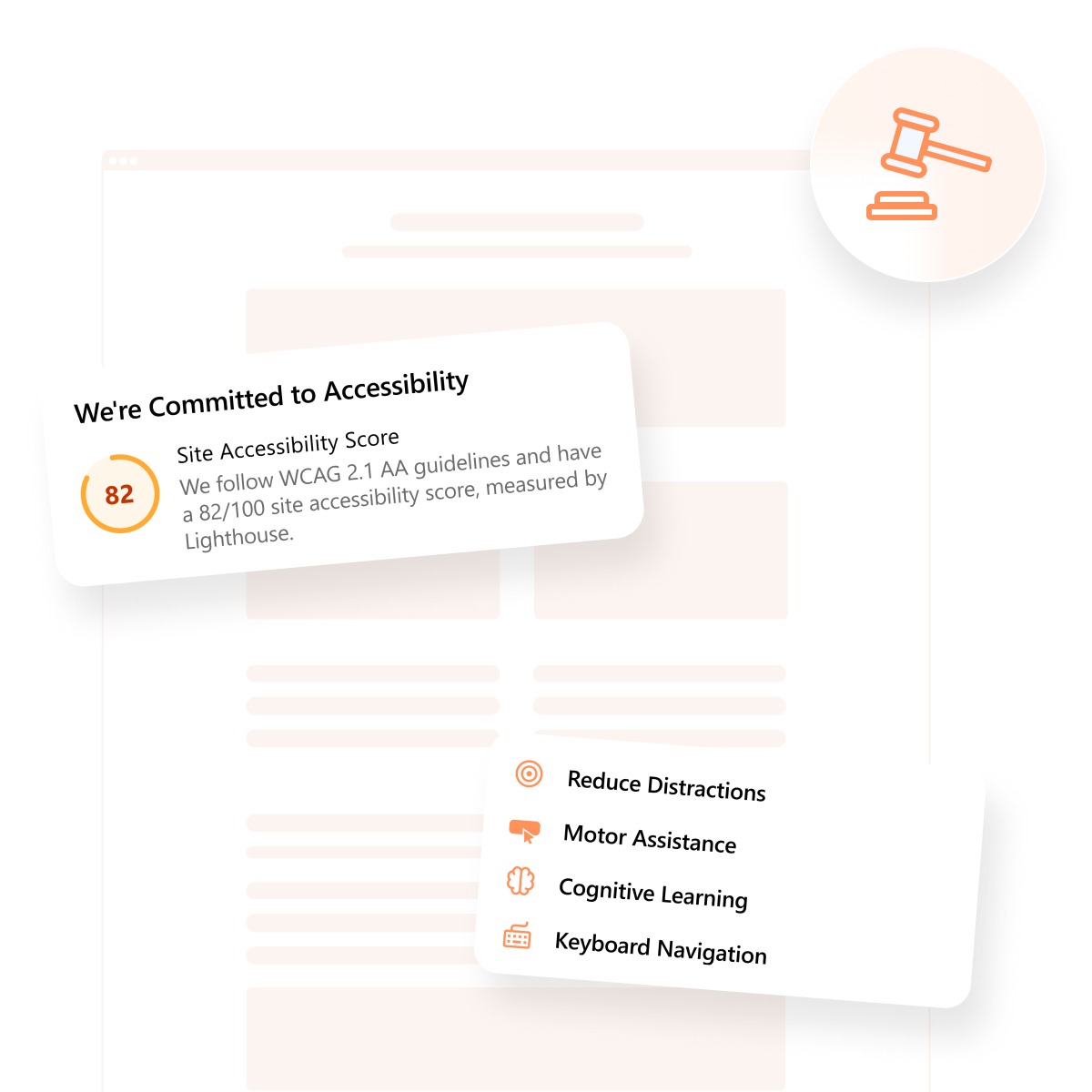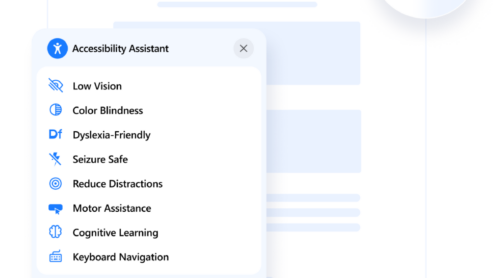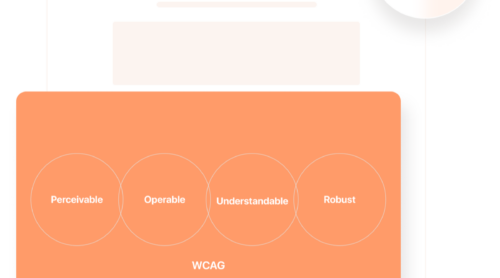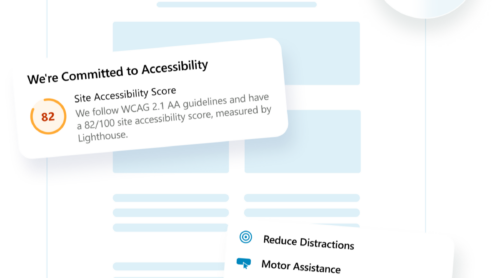Across the European Union, the drive for inclusive digital experiences has become more urgent than ever. With the rise of public services and commercial platforms moving online, the importance of ensuring equal access for individuals with disabilities has grown exponentially. At the heart of this shift are efforts like the European Accessibility Act (EAA), which underscores the region’s commitment to universal usability and equitable access to digital content.
The EU Accessibility Act and Web Content Accessibility Guidelines (WCAG) alignment reflects a deeper push toward harmonizing legal and technical standards to eliminate barriers for millions of users. From mobile apps to e-commerce platforms, no aspect of the digital experience is exempt from scrutiny. These initiatives are not just legal obligations — they’re milestones in the evolution of inclusive design legislation.
Here’s why digital accessibility has become a central issue in EU policy and technological development:
- High prevalence of disability. Over 135 million people in the EU live with disabilities, making accessibility a critical social and economic consideration.
- Human rights commitment. Digital access is recognized as part of the EU’s broader human rights agenda, ensuring everyone can engage with digital tools equally.
- Growing digital reliance. Essential services such as banking, healthcare, and government forms are increasingly delivered online, making inaccessibility a threat to daily life.
- Demographic shifts. An aging population increases the number of users who benefit from accessible design — such as readable fonts, intuitive navigation, and assistive technology support.
- Broader usability gains. Accessibility improvements also benefit users without disabilities, such as those on mobile devices or with slower internet connections.
By establishing clear digital accessibility obligations, the European Union is encouraging organizations to think beyond usability as a feature, and embrace it as a foundation for digital equity. This not only fosters a better user experience but also reduces legal risks and expands potential audience reach.
What Are WCAG Standards
To address usability barriers for people with disabilities, the World Wide Web Consortium (W3C) developed a framework known as the Web Content Accessibility Guidelines. These standards outline how digital content should be created to ensure it can be accessed and used by everyone, regardless of ability or assistive technology.
WCAG has evolved through several versions, each building upon the previous to reflect technological advancements and user needs:
| Version | Release Year | Key Focus |
|---|---|---|
| WCAG 2.0 | 2008 | Established the foundational POUR principles — Perceivable, Operable, Understandable, and Robust. |
| WCAG 2.1 | 2018 | Added success criteria for mobile accessibility, low vision, and cognitive disabilities. |
| WCAG 2.2 | 2023 | Introduced new guidelines focusing on easier navigation, clearer focus indicators, and more inclusive user input controls. |
In the context of the WCAG and European Accessibility Act relationship, WCAG 2.1 has been the widely accepted benchmark, while WCAG 2.2 is gaining traction in anticipation of future legal requirements. The European Accessibility Act is expected to rely on these harmonized standards for web compliance to define accessibility baselines for digital content and services.
Used in regions like the EU, U.S., and Canada, WCAG has become the international standard for digital accessibility. Its influence goes beyond websites — it also affects documents, apps, and multimedia content where inclusive access is essential.
What Is the European Accessibility Act
The European Accessibility Act is a sweeping legislative initiative adopted by the European Union to improve accessibility across a wide range of digital and physical services. It sets out common rules to ensure that key products and services are usable by people with disabilities throughout the EU.
This regulation is a cornerstone of the EU’s effort to reduce fragmentation in accessibility standards across Member States. By setting a unified framework, the EAA enhances the functioning of the internal market while enforcing strong digital products and services regulation.
The European Accessibility Act 2025 requirements apply to businesses operating in or targeting EU markets. It is not limited to public institutions — private companies are equally expected to comply.
Key compliance obligations include:
- Who Must Comply: Applies to manufacturers, importers, service providers, and digital product developers across the EU.
- What’s Covered: Banking services, e-commerce platforms, smartphones, e-readers, ATMs, ticketing machines, and websites and mobile applications.
- Micro-Enterprise Exception: Small businesses with fewer than 10 employees and annual turnover under €2 million are exempt — though voluntary compliance is encouraged.
To support enforcement, the EAA also introduces mechanisms for monitoring and penalties in case of non-compliance. National authorities will oversee local enforcement while working under a harmonized EU framework, ensuring consistency in enforcement of digital accessibility laws.
The EU Accessibility Act 2025 and WCAG connection will play a crucial role in how accessibility is assessed — especially for digital content. This makes WCAG a practical standard for meeting EAA obligations across digital environments.
Key Differences between WCAG and the EAA
Although the EAA and WCAG are often mentioned together, they are fundamentally different in purpose, scope, and enforcement. Confusing the two can result in partial compliance and increased legal risk. To navigate accessibility requirements effectively, businesses must understand how these frameworks complement — and differ from — each other.
Let’s start with the basics: the Web Content Accessibility Guidelines are technical standards. They provide a global blueprint for making digital content accessible to all users, especially those with disabilities. In contrast, the European Accessibility Act is a piece of EU legislation. It outlines which services and products must be accessible, defines who is responsible, and specifies how and when compliance must be achieved.
Comparison of Purpose and Authority
| Aspect | WCAG | European Accessibility Act (EAA) |
|---|---|---|
| Type | Technical standard (developed by W3C) | Legally binding EU directive |
| Scope | Digital content: websites, apps, PDFs, multimedia | Digital and physical services: banking, e-commerce, ticketing, telecom, etc. |
| Geographic Coverage | International | European Union |
| Mandatory? | No (used as a reference standard) | Yes (enforced with penalties) |
| Updates | Updated regularly (e.g., WCAG 2.1, 2.2) | Fixed framework with specific deadlines |
| Penalties for Non-Compliance | None (depends on adoption into law) | Yes (national-level enforcement with monitoring) |
Use Case Differences
Understanding the practical implications of these differences can help businesses prioritize their efforts more strategically:
- WCAG helps designers, developers, and content creators understand how to build accessible digital experiences.
- The EAA mandates which types of businesses and which services must be accessible and by what deadline.
- WCAG is technology-focused; the EAA is compliance-focused, with broad policy implications.
- WCAG applies to any organization that chooses to follow it, while the EAA applies to companies offering services to the EU market — even if they are based elsewhere.
Does WCAG Guarantee EAA Compliance?
This is a common misconception. While WCAG 2.1 and 2.2 are referenced in EAA-related discussions, meeting WCAG alone may not fulfill all European Accessibility Act and WCAG requirements. For example, the EAA includes obligations around:
- Customer support services (e.g., phone systems must be accessible for users with hearing impairments).
- Contractual documents and payment interfaces (not always covered directly by WCAG).
- Hardware interactions, such as self-service terminals and ticketing machines.
That said, WCAG remains the most practical and detailed resource for ensuring the digital aspects of compliance. When applied thoughtfully, it helps fulfill many — but not all — EAA obligations.
Why Understanding the Difference Matters
Businesses that assume WCAG conformance is enough risk falling short of broader requirements defined by EU law. This could lead to reputational damage, lost contracts, or financial penalties enforced by national regulators.
In short, WCAG helps you build accessible content; the EAA ensures you are legally required to do so, depending on your service and audience. Awareness of the legal implications of non-compliance is critical for organizations that want to avoid costly oversights.
How WCAG Supports the EAA
Although the EAA does not legally bind organizations to a specific version of WCAG, it strongly encourages alignment with internationally recognized standards. In practice, WCAG compliance under the European Accessibility Act is the clearest and most efficient path to fulfilling digital accessibility requirements.
WCAG as the Technical Backbone
The EAA explicitly calls for adherence to harmonized standards for web compliance. These are technical frameworks approved at the EU level to guide implementation. WCAG — maintained by the World Wide Web Consortium — is one such standard that has been widely adopted by EU member states and referenced in multiple national laws.
Which WCAG Version Applies?
Current guidance suggests that WCAG 2.1 Level AA is the minimum recommended conformance level under the EAA. However, WCAG 2.2 — released in 2023 — is being encouraged in anticipation of future harmonization. Aligning with WCAG 2.2 demonstrates a proactive approach to accessibility and futureproofs your efforts.
Expected WCAG Conformance Levels for EAA Alignment:
- Level A – Basic accessibility support (not sufficient for legal compliance).
- Level AA – Widely recognized as the standard baseline under the EAA.
- Level AAA – Advanced, optional enhancements for specific audiences.
Public Sector Influence and Private Sector Adoption
Before the EAA, many EU nations already required WCAG compliance in the public sector accessibility guidelines. The EAA expands this expectation to many private-sector services, such as banking, e-commerce, and transportation. WCAG’s widespread use across these sectors provides legal and technical consistency across borders.
In summary, even if not named explicitly, WCAG offers the most actionable path toward EAA compliance. By adopting its principles and applying its criteria, businesses can align with the European Accessibility Act and WCAG expectations simultaneously — saving time, avoiding legal missteps, and serving all users more effectively.
Steps to Make Website Accessibility Compliant
Meeting the European Accessibility Act requirements means more than ticking off a checklist — it requires a proactive, user-centered approach. Businesses must prepare their websites and digital services now to meet legal, technical, and ethical expectations.
The first step is aligning your digital presence with WCAG 2.2 principles. This ensures that you’re not only compliant but also creating a welcoming space for users with disabilities.
Key Action Steps to Ensure Compliance
| Step | Description |
|---|---|
| Audit your current digital assets | Conduct a comprehensive assessment of your website’s accessibility gaps. Focus on navigation, readability, keyboard functionality, and screen reader compatibility. |
| Train your team | Ensure designers, developers, and content creators understand WCAG and the EAA’s role in their workflow. Accessibility starts with awareness. |
| Establish internal policies | Implement company-wide standards to embed accessibility into every stage of design and development. |
| Use assistive tools and technology | Leverage platforms that offer automated audits, accessibility overlays, and customizable widgets to support your process. |
| Monitor and maintain | Accessibility is ongoing. Regularly test updates, user flows, and content changes to stay compliant with EU-wide accessibility enforcement. |
Make Accessibility Easier with Elfsight
If you’re looking for a powerful yet easy solution to meet accessibility standards, the Elfsight Accessibility Widget is designed to help you align with WCAG, EAA, ADA guidelines — no coding required. It’s built for real-world impact, helping you improve accessibility without overhauling your design.
This widget empowers users to personalize their browsing experience with built-in accessibility modes tailored for various needs, such as low vision, dyslexia, color blindness, and others.
How to Get Started
- Select a template. Open the Elfsight configurator, choose an accessibility preset, and click “Continue with this template”.
- Run a compliance scan. Use the built-in accessibility audit tool to detect and address WCAG-related issues.
- Customize the widget. Set language, device rules, widget placement, and memory settings. You can even add custom CSS or scripts if needed.
- Embed on your website. Copy the generated code and paste it into your CMS or HTML — whether you’re on WordPress, Squarespace, Wix, Shopify, or another platform.
Why Choose Elfsight?
- Inclusive modes. Support various disabilities with one-click configuration.
- Design flexibility. Match branding with custom icons, color schemes, and widget behavior.
- Real-time auditing. Detect issues based on current WCAG guidelines automatically.
- User preference memory. The widget remembers visitor settings for a consistent experience.
- Multilingual support. Choose from 20+ languages or upload your own translation files.
Whether you’re starting from scratch or improving an existing setup, the Elfsight accessibility widget helps you stay on track with accessibility conformance timelines — without sacrificing style, speed, or control.
See accessibility in action — use the widget now!
Final Thoughts
The European Accessibility Act and WCAG form a complementary framework: one defines the legal requirements, the other provides the technical path to meet them. Embracing both ensures your website is not only compliant but truly inclusive. Aligning with these regulations enables businesses to meet evolving accessibility standards while serving a wider audience more effectively.
Proactive adoption of accessibility practices reduces the legal implications of non-compliance and supports long-term usability and trust. Meeting your digital accessibility obligations today means creating a better digital experience for everyone — tomorrow and beyond.







